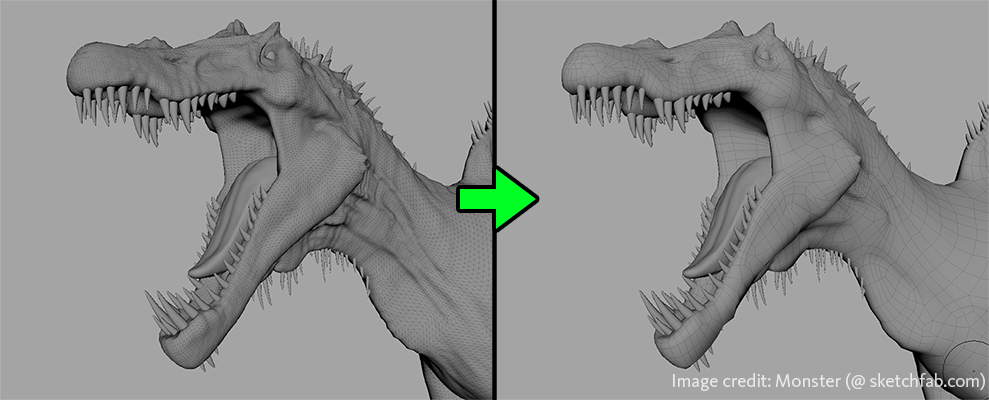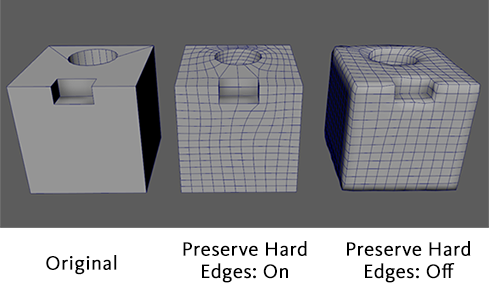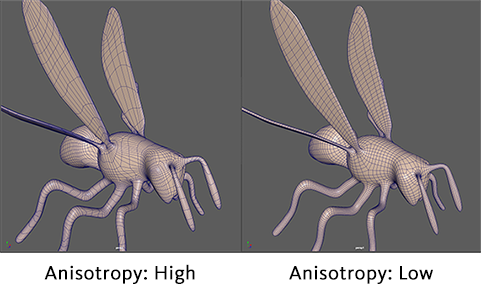

Generates clean, new topology that preserves the surface features of a selected mesh while ensuring all the faces are quads. Use the following options to set what happens when you select Mesh > Retopologize, or open the Attribute Editor with the polyRetopo node selected. You can view Retopologize progress in the Output window.
- Keep Original
-
Specifies whether to retopologize a copy of the selected object, or the object itself. This is only available in the Retopologize Options window.
- Preserve Hard Edges
-
Specifies whether to use the model's hard edges ( as feature edges for the retopologized model. Turning this on will result in features around the hard edges being more accurately converted to the new model (such as wrinkles, brows, lips, etc). However, too many hard edges can cause the algorithm to run very long. Turning this off will treat all edges as soft edges. This is only available in the Retopologize Options window.

- Target Face Count
-
The desired number of faces for the retopologized mesh. This is not a hard count, but more of a target that Retopologize will attempt to hit. If set to 0, Target Edge Deviation will control the density of the result.
- Tolerance (%)
-
The margin of error (%) from the Target Face Count that is considered an acceptable result. Very low values (< 10) can result in slow performance.
- Topology Regularity
-
Determines the number of singularities (vertices with less than 4 connected edges) in the result. Lower values produce less singularities, but may smooth over fine details.
- Face Uniformity
-
Determines how much the faces on the result mesh are allowed to squash or stretch to fit the source surface shape. Lower values produce varying sizes of quads that adhere more accurately to the original mesh curvature, while higher values produce more regularly sized quads.
- Anisotropy
-
A value from 0 to 1 representing the amount of map-stretch over cylindrical regions. Lower values prevent map-stretch, which produces denser meshes with less rectangular elements. Higher values allow map-stretch to produce more efficient but angular meshes.
